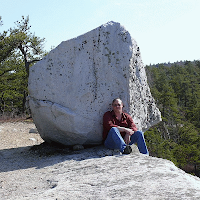As with most things in this world, the real story is a lot more complex. But in order to understand it, we have to learn a little history first (look, history and science together – that’s why college has a liberal arts curriculum boys and girls!).
Around 50 BC, the traditional calendar used in the Roman Republic was in disarray. It actually had only 355 days in a year and every 2 to 3 year, the Pontifex Maximus, a political appointee, added an extra month (called the Mensis Intercalaris) into the middle of Febrarius. Problem was, he didn’t always do it correctly so by this time the calendar was about 80 days or so off from the yearly movement of the Sun.
 Into this stepped Julius Caesar. Caesar spend time in Egypt from 48 – 47 BC where he became embroiled in the Ptolemaic dynastic war (and with Cleopatra). Caesar was an intelligent man who spent much of his time in Egypt learning about their knowledge and culture. It was there that he heard about the ancient Egyptian solar calendar of 365 days. The Egyptians actually knew the year was 365.25 days long since they had learned if from the ancient Greeks (the city of Alexandria, on the Mediterranean coast of Egypt, was a center of Greek knowledge during the Greek classical age and hosted the largest library in the ancient world).
Into this stepped Julius Caesar. Caesar spend time in Egypt from 48 – 47 BC where he became embroiled in the Ptolemaic dynastic war (and with Cleopatra). Caesar was an intelligent man who spent much of his time in Egypt learning about their knowledge and culture. It was there that he heard about the ancient Egyptian solar calendar of 365 days. The Egyptians actually knew the year was 365.25 days long since they had learned if from the ancient Greeks (the city of Alexandria, on the Mediterranean coast of Egypt, was a center of Greek knowledge during the Greek classical age and hosted the largest library in the ancient world).When Julius Caesar returned to Rome, he decided to reform the calendar which everyone acknowledged was a mess. He called together a council of mathematicians and astronomers, notably Sosigenes of Alexandria, who pulled together the old Roman Calendar, the Egyptian solar calendar, and the knowledge that the tropical year was 365.25 days long (this knowledge goes all the way back to Eudoxus of Cnidus – a brilliant Greek mathematician who lived around 375 BC).
Roman historian Pliny the Elder wrote around 79 CE:
“There were three main schools, the Chaldaean, the Egyptian, and the Greek; and to these a fourth was added in our country by Caesar during his dictatorship, who with the assistance of the learned astronomer Sosigenes ... brought the separate years back into conformity with the course of the sun.”
In order to align January 1, 45 BC with its correct position in his new calendar, Caesar decreed that 46 BC would be 445 days long – how far the old Roman Calendar had fallen behind the “real” date by the position of the Sun.
The Julian calendar had the following months.
Ianuarius 31
Febrarius 28 (29 on leap years)
Martius 31
Aprilis 30
Maius 31
Iunius 30
Quintilis (Iulius) 31
Sextilis (Augustus) 31
September 30
October 31
November 30
December 31
The old Roman month of Quintilis was renamed Iulius in Julius Caesar’s honor after his death in 44 BC shortly after his calendar reform (it didn’t make much sense to keep calling the seventh month “fifth”). A popular Roman senatorial decree in 8 BC also changed the name of Sextilis to Augustus after Augustus Caesar.
So by the beginning of the Christian Era, all of the months of the calendar had the names by which we know them today. Adding up the days of the month gives us 365 days in the year. By adding a leap year every 4 years, giving 366 days, the average length of the year was now 365.25 days. Since the mean solar year is slightly shorter at 365.2421897 days, this gives a difference of 0.0078103 days.
Let’s calculate how many years it will take before we have an error of 1 day:
0.0078103 d / 1 yr = 1 d / X yr [Here’s the ratio]
X yr = (1 d) (1 yr) / 0.0078103 d [Rearrange the terms to solve for X]
X yr = 1 yr / 0.0078103 [Cross off day units]
128.04 yr [Solved]
So, every 128 years, the calendar is off by one day – the date of the solstice will occur one day before the actual solstice – that’s actually a lot of error! Over time, the Julian calendar was doomed to failure for this inaccuracy.
This inaccuracy came to a head in the 1500s when church authorities finally dealt with the problem. The push to do this came from the fact that the method for computing the date of Easter uses the date of the Vernal Equinox. By the 1500s, the Julian Calendar was saying the Vernal Equinox was on March 10 instead of March 21 where it should have been and this was causing no end of confusion.
The solution to this problem was developed by Pope Gregory the XIII, with the assistance of Jesuit astronomer Christopher Clavius, by the creation of a new calendar. The Pope then issued a Papal Bull which decreed that the day after Thursday, October 4, 1582 would be not Friday, October, 5 but Friday, October 15! The loss of 10 days was necessary to align the new calendar with the actual date in the tropical year.
Pope Gregory XIII (1502-1585) and Christopher Clavius (1538-1612)
The Gregorian Calendar is now also known as the Western or Christian Calendar and is the internationally accepted civil calendar. The month names and days are familiar to all of us:
January 31
February 28 (29 on leap years)
March 31
April 30
May 31
June 30
July 31
August 31
September 30
October 31
November 30
December 31
The days of the months are remembered with the traditional rhyme:
Thirty days hath September,
April, June, and November;
All the rest have thirty-one,
Save February, with twenty-eight days clear,
And twenty-nine each leap year.
How is this different from the Julian Calendar? What Pope Gregory did was institute another rule – years divisible by 100 would be leap years only if they were divisible by 400 as well. In other words, 1600 and 2000 were normal leap years but 1700, 1800, and 1900 were not (these would have been in the Julian Calendar). So every 400 years, you lose 3 leap year days. This gives the average length of the year as:
400 yr x 365.25 d/yr = 146,100 d – 3 d = 146,997 d / 400 yr = 365.2425 d/yr [on average]
Compared to the tropical year value of 365.2421897 days, this gives a difference of 0.0003103 days. Let’s calculate how many years it will take before we have an error of 1 day:
0.0003103 d / 1 yr = 1 d / X yr [Here’s the ratio]
X yr = (1 d) (1 yr) / 0.0003103 d [Rearrange the terms to solve for X]
X yr = 1 yr / 0.0003103 [Cross off day units]
3222.69 yr [Solved]
In other words, the new Gregorian Calendar will lose a day every 3,223 years as opposed to the Julian Calendar error of a day every 128 years. From its institution in 1582, it will only have lost 1 day by the year 4805!
People rioted in the streets in some places over the loss of 10 days when October, 5 changed to October 15 but Catholic countries relatively quickly adopted the new calendar (the Pope still had a lot of power at that time). It took over 100 years before most of the Protestant countries in Europe abandoned the Julian Calendar. Great Britain and the American colonies didn’t switch until 1752 and in Russia, it wasn’t adopted until the Russian Revolution of 1917. One of the last major holdouts, the Eastern Orthodox Church, still uses the Julian Calendar for calculating the date of moveable feasts (church holy days that don’t fall on the same date each year).
No matter what you do, a calendar will always have some accumulating error due to the fact there are 365.2421897 days in a tropical year and, worse yet, that number is an average since the shape of the Earth’s orbit varies a bit year to year and over geologic time periods.






















